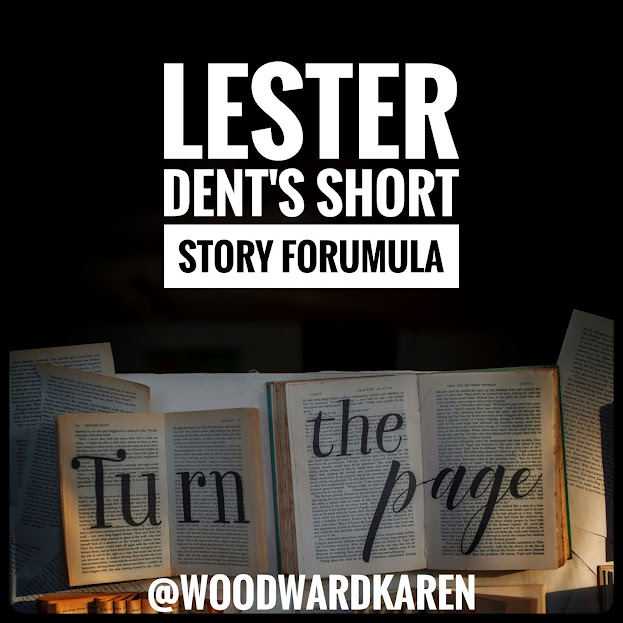(I've recently begun re-writing this series. Here are the first two posts:
Lester Dent's Short Story Fiction Formula: Introduction
Lester Dent's Short Story Fiction Formula: The Plan)
Lester Dent's Short Story Fiction Formula: The Plan)
-- --
Lester Dent, creator of Doc Savage and one of the great pulpiteers of the 30s and 40s, had what he called a master plot formula for writing a 6,000 word story. He writes:
"It has worked on adventure, detective, western and war-air. It tells exactly where to put everything. It shows definitely just what must happen in each successive thousand words.Here's how Michael Moorcock summed up Dent's formula:
"No yarn of mine written to the formula has yet failed to sell."
"... split your six-thousand-word story up into four fifteen hundred word parts. Part one, hit your hero with a heap of trouble. Part two, double it. Part three, put him in so much trouble there's no way he could ever possibly get out of it. ... All your main characters have to be in the first third. All your main themes and everything else has to be established in the first third, developed in the second third, and resolved in the last third. (Lester Dent, Wikipedia)"Here are a series of posts on Lester Dent's formula:
Lester Dent's Short Story Master Formula
In the first part of this series we prepare to write a 6,000 word story by
a. Choosing a murder method.
b. Deciding what the villain will want, what will be his goal.
c. Picking a setting.
d. Crafting the hero's motivation.
Lester Dent: How To Write A 6,000 Word Short Story: The First Quarter
Now that we've chosen a murder method, a goal for our villain, picked a setting and developed the hero's motivation we're ready to set pen to paper and start writing our story. Here are a few pointers Dent gives:
- Introduce your characters early and in action.
- Make your character's introduction memorable.
- Put the hero in danger in the first line.
- End the first 1,500 words with a twist.
Lester Dent's Master Fiction Formula: The Second 1,500 Words
We've got the first quarter of the story written, now we've got to take the action up to the halfway point. Here are a few of Dent's pointers:
- Have the threat the villain poses to your hero grow blacker.
- Increase the stakes.
Lester Dent's Master Fiction Formula: The Third 1,500 Words
In the third quarter of our story:
- A complication is introduced,
- The hero bats the complication aside.
- The hero confronts the villain and seems to have the upper hand, but not for long ...
- The villain does something uniquely underhanded and turns the tables. The hero's plan is in shambles and he is worse off than ever.
Lester Dent's Master Fiction Formula: The Fourth And Final 1,500 Words
We're almost finished! In the fourth and final quarter of our story:
- A complication is introduced.
- The hero overcomes the complication.
- The hero, using his skill and intelligence, rescues himself.
- The hero and the villain face off. This is it, the climax. This is where things will be settled one way or another.
- As part of the climax we learn the solution to the main mystery: How was the victim killed? We learn how the deed was done, who did it and why.
- The villain pulls something out of his hat, something that surprises the hero.
- Final twist.
- Wrap things up.
- Close with a punch line. Have the hero say something snappy.
Links/Further Reading
I just came across this article, "A look at pulp hero genres," by Michael R. Brown. Brown reminds us that the pulp books were from many genres. He also lists the genres and gives examples. Thanks to Elizabeth S. Craig for sharing the link. (April 23, 2014)
Michael Moorcock
Michael Moorcock's method for writing a 45,000 to 60,000 novel in three days.
How Michael Moorcock Wrote A Novel In Three Days
Getting prepared.


No comments:
Post a Comment
Because of the number of bots leaving spam I had to prevent anonymous posting. My apologies. I do appreciate each and every comment.